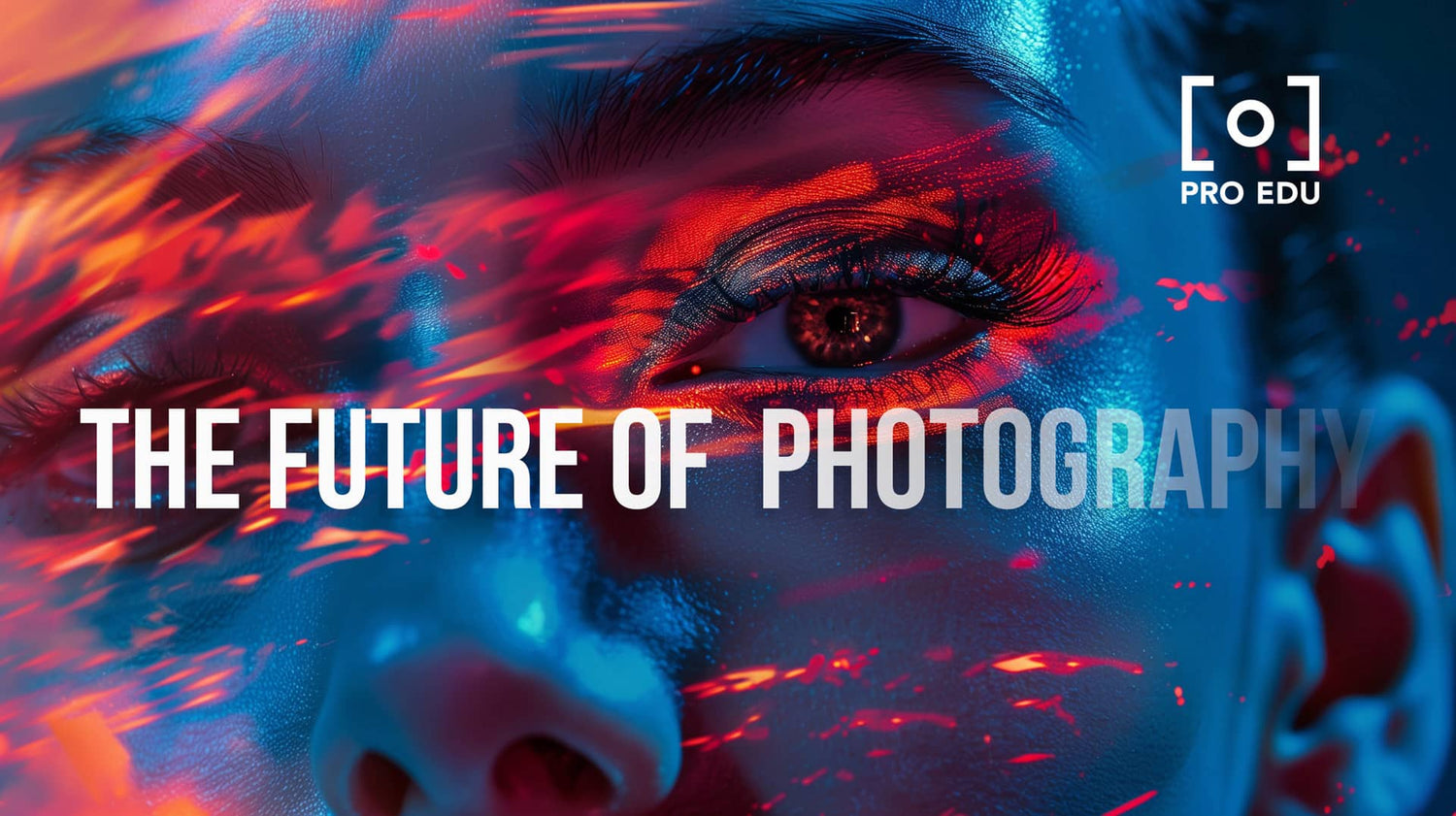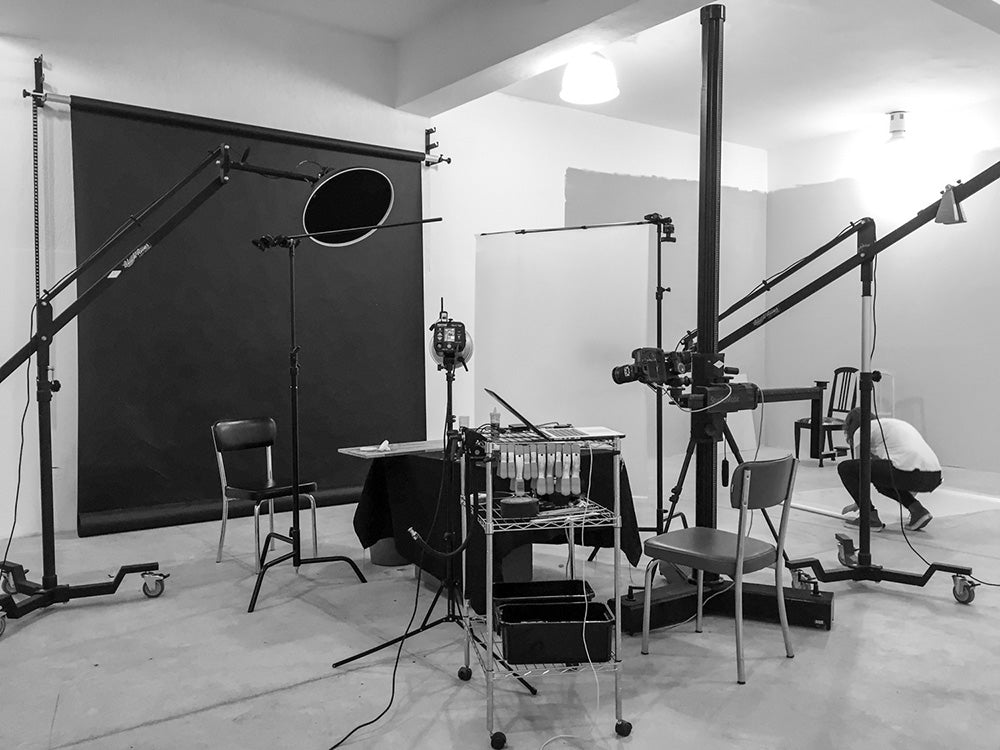The landscape of commercial photography is constantly evolving, with new technologies shaping both the creation and consumption of imagery. As we look forward into the next decade, it is essential to identify the trends that will influence the industry in 2024 and beyond.
Advances in camera technologies, the integration of artificial intelligence, and the dynamic of market forces all play vital roles in how we, as photographers and industry professionals, will navigate the future.
Understanding the impact of social media and the burgeoning resurgence of analog photography are additional facets that will dictate the future of photography. New frontiers are emerging, expanding the scope and reach of commercial photography into previously untapped realms.
This ever-shifting terrain not only affects the tools and techniques employed but also the business landscape, setting new expectations for the employment outlook of photographers. Preparing for what lies ahead is key; staying informed and adaptable will help us ensure sustained success in our field.
Key Takeaways
- Emerging technologies and social media are influencing commercial photography trends.
- Adapting to market changes and AI advancements is crucial for future success.
- Diversification and strategic planning are imperative for photographers in 2024.
Evolving Camera Technologies and Tools
In the next decade, we can anticipate significant shifts in the photography landscape prompted by the evolution of camera technologies and tools. Our focus will be on two core developments: the emergence of smartphone cameras as serious tools for commercial photography and the continual improvements in DSLR and mirrorless systems.
The Rise of Smartphone Cameras
Smartphone cameras have evolved into sophisticated imaging tools, rivaling traditional cameras in certain contexts. Brands like Apple and Samsung have integrated advanced sensors and computational photography algorithms, enabling smartphone cameras to produce high-quality images. Features such as multiple lenses with varying focal lengths and depth-sensing capabilities allow for professional-level photography in a pocket-sized device. For photographers, this means a more accessible and immediate way to capture commercial-quality images, with portability that traditional cameras can't match.
Advancements in DSLR and Mirrorless Systems
The DSLR and mirrorless camera market continues to innovate, driven by key players like Nikon, Canon, Sony, and Olympus. We observe a trend toward mirrorless technology due to its lighter build, increased autofocus speeds, and superior video capabilities. Recent advancements include:
- Improved Sensor Technology: Larger and more advanced sensors are providing better low-light performance and higher dynamic range.
- Enhanced Autofocus Systems: These systems are faster and more accurate, with eye-tracking capabilities that offer precise focus for portrait photography.
- Connectivity: New DSLR and mirrorless models have enhanced connectivity features, making it easier to transfer photos directly to smartphones or cloud storage.
- 4K and 8K Video: With the adoption of higher-resolution video capture, these cameras are not only for stills but also cater to a growing demand for high-quality video content.
Camera technology continues to progress, providing us with tools that are more capable and versatile, catering to both the traditional photographer and the modern content creator.
The Impact of Artificial Intelligence on Photography
In the realm of commercial photography, AI has become a fundamental component, shaping various aspects of the craft, from editing workflows to camera functionalities. We are witnessing a significant transformation as these technologies evolve.
AI-Enhanced Editing and Post-Processing
AI-driven tools have revolutionized the way we approach editing and post-processing. Platforms like Adobe have integrated AI to expedite complex editing tasks, which previously consumed hours of manual effort. For instance, Adobe's Sensei leverages AI to automate tasks like object selection and background removal, enabling photographers to achieve precise edits with minimal input. The integration of AI in photography also facilitates adaptive filters and effects, which can be tailored to the specific style or requirements of a project, ensuring both efficiency and consistency in the final outputs.
-
Key AI Editing Features:
- Automatic object selection and masking
- Adaptive filters and AI-enhanced effects
- Content-aware fill and retouching
Autofocus and Tracking Innovations
AI has substantially boosted the capabilities of autofocus (AF) and tracking systems, which are indispensable in modern commercial photography. We see cameras using intelligent algorithms that identify subjects within a frame and predict their movement, which is crucial for capturing sharp images in dynamic scenarios. For example, the latest cameras offer AI-powered eye-tracking autofocus, which ensures that a subject's eye is in focus in portraits, even if they are moving. This technology not only enhances the reliability of autofocus systems but also allows photographers to concentrate on composition and storytelling.
-
Key AI Autofocus Advancements:
- Eye-tracking AF for pinpoint accuracy in portraits
- Predictive tracking for moving subjects
- Enhanced AF performance in low light and complex conditions
Photography Industry Market Dynamics
In this section, we'll examine the substantial elements of the photography industry's market dynamics, focusing on the global context and scrutinizing sales and revenue. Our emphasis will be on the latest market trends and factual revenue figures.
Global Market Overview
According to recent data, the photography industry's global market is expected to experience continued growth. We see regions such as North America and Europe as pivotal players, with the United States holding a significant market share. This is indicative of the industry's robust engagement with digital transformation and technology integration. The Photographic Services Global Market Report suggests that the industry, despite past disruptions, is on a path to recovery with projected increases in value.
Sales and Revenue Analysis
When we turn our attention to sales and revenue, we endeavor to report precise figures. The photography market size is on an upward trajectory — a trend underscored by projections that estimate the global photography market could reach $44.07 billion by 2025. The Compound Annual Growth Rate (CAGR) is another critical metric assessing the industry's health, with forecasts indicating a CAGR of approximately 2.2% for certain segments, emphasizing the commercial photography market's strength and potential for expansion.
Social Media Influence on Photography Trends
As we explore the transformative impact of social media on the commercial photography landscape, it's evident that platforms like Instagram and TikTok are at the forefront of shaping visual content. These platforms have become pivotal in dictating how we present and consume photography.
Rise of Visual Platforms
Social media platforms have evolved into visual arenas where photography is more than mere representation—it's communication. Instagram, for instance, has moved beyond a photo-sharing app to become a beacon of photographic trends, often setting the tone for visual aesthetics in commercial photography. We've witnessed the platform influence the rise of minimalistic layouts and authentic, lifestyle-oriented shots that resonate with audiences.
TikTok has introduced a different dynamic by popularizing short-form video content. This has led to a cross-pollination where still photography on platforms often incorporates elements of motion or animation to capture the fleeting attention of scrolling users.
E-commerce and Product Imagery
In e-commerce, product photography has been revolutionized by social media influence. Social media platforms become virtual storefronts, requiring product imagery that engages potential customers. We understand the necessity for high-quality and visually appealing product photos, as they significantly affect consumer decisions. Platforms like Instagram have given rise to an entire genre of product photography that leans heavily on lifestyle images, where products are displayed in relatable, aspirational settings that encourage viewers to imagine the products in their own lives.
E-commerce brands are leveraging these platforms to showcase products through user-generated content and influencer partnerships, blurring the lines between conventional advertising and organic customer experience. Such imagery not only showcases the product but also tells a story, aligning with the brand's identity and values that their audience can identify with.
The Resurgence of Analog and Film Photography
In recent years, we've witnessed a notable return to film photography. As digital technology dominates our daily lives, a growing number of photographers are drawn to the charm of analog processes and the tactile experience they provide.
Lomography and Vintage Appeal
Lomography has emerged as a vibrant movement, fueled by a longing for the nostalgia and aesthetic of the past. We're seeing a wave of photographers who are engaging with older, often mechanical cameras for their distinct vintage appeal. These cameras, like the colorful plastic Lomo LC-A, are beloved for their simplicity and the unique, often unexpected results they produce. Our pursuit of vintage visuals is more than a trend—it's a poignant connection to photography's roots.
The Texture and Quality of Film
When it comes to film photography, the texture and quality of images are unmatched. Film grants us a range of tonal variations and a depth that is hard to replicate with digital sensors. We're recognizing that each film stock contributes its character to our photographs, from the vivid colors of a slide film to the fine grain of a high-quality black and white film. This tangible quality resonates strongly with those of us who seek a more authentic, hands-on approach to photography, typically associated with analog photography.
New Frontiers in Photography
In this section, we explore the transformative potential of virtual and augmented reality in photography, as well as the expansive vistas opened by aerial photography and drone technology.
Virtual and Augmented Reality Integration
The integration of virtual reality (VR) and augmented reality (AR) into photography is revolutionizing the way we experience and create images. These technologies enable us to create immersive photography experiences, allowing viewers to step inside a photo and interact with the environment in a multidimensional space. For instance, applications in real estate allow potential buyers to take virtual tours of properties from anywhere in the world.
Aerial Photography and Drone Technology
Aerial photography has been elevated to new heights with the advent of drones. These flying cameras have democratized aerial perspectives, making them accessible to more photographers. They enable us to capture breathtaking landscapes and cityscapes from angles that were once impossible without a helicopter. In addition, drones are advancing in terms of their automation and flight capabilities, offering photographers innovative ways to approach their craft.
Business and Employment Outlook for Photographers
In the coming decade, we can anticipate significant shifts within the photography industry, influencing both business prospects and employment patterns. Our insights focus on diverse niches that present opportunities, as well as the challenges that professional photographers may face.
Opportunities in Various Photography Niches
Within the realm of commercial photography, we see an emergent trend toward specialization. The demand for wedding photographers remains robust, as couples continuously seek to immortalize their special day with high-quality imagery. Wedding photography is a pillar in the industry, often considered recession-proof due to its emotional significance.
Meanwhile, real estate photographers also experience increased demand; the dynamic property market calls for compelling visual portfolios that can only be provided by skilled professionals. This niche requires a keen eye for detail and an ability to highlight the assets of any property, a service that continues to prove its value in successful property listings.
Professional photographers who adapt to these niches and stay abreast of current trends can expect to find a steady stream of opportunities. Pursuing continued education and honing skills in post-processing and digital presentation will aid in remaining competitive in these areas.
Challenges and Obstacles in the Profession
Despite these niches flourishing, the photography profession faces its share of hurdles. Given the saturation of the market and the rise of high-quality smartphone cameras, distinguishing oneself as a professional hinges on both marketing skills and photographic excellence.
One key obstacle we must navigate is employment competition. With projections indicating an average growth in photography jobs, staying ahead of the curve implies not only producing stellar work but also cultivating a desirable brand and business acumen.
Additionally, maintaining a successful photography business requires handling the economic pressures of freelance work. Unpredictable income streams and the responsibility for one's own benefits are realities that necessitate strategic financial planning and client relationship management.
We understand that adaptability and entrepreneurial spirit are as vital as photographic talent. By embracing these strengths, we will be poised to meet and overcome the challenges that lie ahead in the photography profession.
Preparing for the Future
Analyzing the latest industry statistics helps us predict where the commercial photography market is heading. We observe a consistent pattern of growth, with a notable shift towards digital and AI-enhanced imaging tools. The market size suggests an expansion of opportunities, but also a demand for high-quality content that stands out in a competitive space.
We must recognize that the future of photography lies in innovation and adaptability. Here are essential strategies we can employ:
- Stay Current: Keep learning about new technologies and software that enhance photography.
- Invest in Quality: Prioritize the acquisition of high-grade equipment to produce superior imagery.
- Master Post-Processing: Develop skills in editing software to add value to our photographs.
- Embrace Marketing: Understand the power of social media and SEO to promote our work effectively.
Key Trends
- Authenticity: Images that tell a genuine story are becoming more desirable.
- Technology Integration: Using drones and 360° cameras for a fresh perspective.
- Sustainability: Showcasing eco-friendly practices within the industry.
By adopting these key trends, we position ourselves to not just survive, but thrive in the evolving landscape of commercial photography. Let us embrace these changes with enthusiasm and a proactive mindset.
Frequently Asked Questions
In this section, we address common inquiries regarding the trajectory of commercial photography, focusing on technological, artistic, and economic developments.
What advancements are expected in drone photography over the next ten years?
Drone photography technology is anticipated to improve significantly, with advancements in battery life and automated flight capabilities. These improvements will allow photographers to capture shots from new vantage points and in more extended sessions.
How might artificial intelligence impact professional photography in the coming decade?
Artificial Intelligence (AI) is expected to greatly enhance image processing and editing, making it faster and more efficient. AI may also assist in subject recognition and framing, allowing photographers to focus more on creativity.
How will the persistent preference for film photography affect future photographic technology trends?
The continued interest in film photography may lead to a resurgence of analog cameras and a blend of film and digital techniques. This could result in technology that captures the aesthetics of film with the convenience of digital workflows.
What innovations could potentially revolutionize photography by 2030?
Emerging technologies like Light Field cameras, which allow focus adjustment after a photo is taken, and advancements in computational photography, might revolutionize the ways we capture and interact with images.
In what ways are 3D modeling technologies expected to integrate with photography practices?
3D modeling is likely to become more integrated, particularly in product and architectural photography, enabling highly realistic and customizable imagery. This can help photographers create detailed previews and virtual environments.
What are the financial prospects for photographers in the evolving digital era?
The financial prospects seem promising as the global market for photographic services continues to grow. Photographers who adapt to digital trends and diversify their skills, such as drone photography or 3D modeling, are likely to see increased opportunities.





























